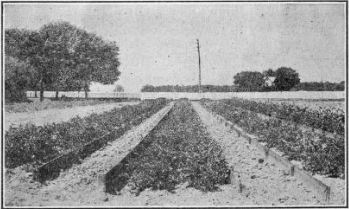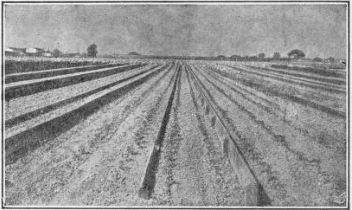Chapter XII. Construction Of Cold Frames
Description
This section is from the book "Vegetable Gardening", by Ralph L. Watts. Also available from Amazon: Vegetable Gardening.
Chapter XII. Construction Of Cold Frames
164. Location And Arrangemen
Cold frames are generally used without artificial heat. It is important that they be well sheltered from north and west winds. As a rule they are used later in the spring than hotbeds. The water requirements of the plants are therefore greater, hence the facilities for watering should be as convenient as possible. Spigots should be located so all the plants can be reached with hose and nozzles. If the cold frame plat is extensive, it will pay to install a line of Skinner irrigation in each frame. The pipe may be placed on the upper side of the frame under the crossbars, with the greenhouse type of nozzle provided at intervals of 3 feet (122). This is a great labor-saving device in the management of frames, and makes it possible to water more uniformly than can be done with hose or watering can. The suggestions on the location and management of hotbeds apply equally well to cold frames.

Fig. 22. potatoes in cold frame plat. summer culture.
165. Grading
If the ground is uneven or sloping, it should be graded before placing or making the frames. Level ground is important for effective watering. When, for example, flats do not set level in the frames, much of the water applied with a hose will run off before it has time to percolate. This may also be true of solid beds, especially if the soil is clayey and lacking in vegetable matter. Excavation is not required for cold frames, as they are mostly placed on top of the ground and banked with some material that will afford additional protection.

Fig. 23. peppers in cold frames. summer culture.
Continue to:
Tags
plants, crops, gardening, cultivated, harvesting, food ,greenhouses, fertiliser, vegitables
